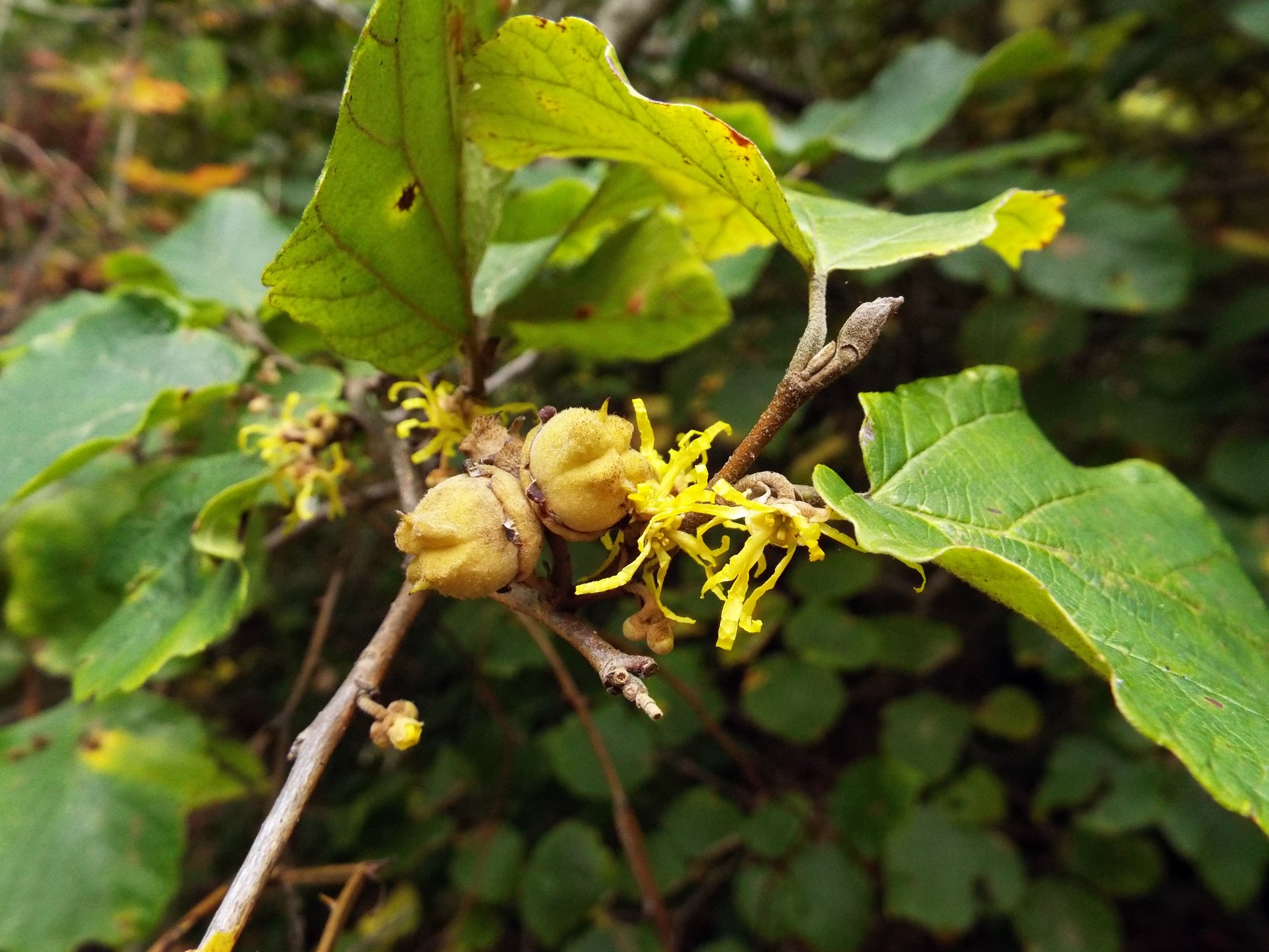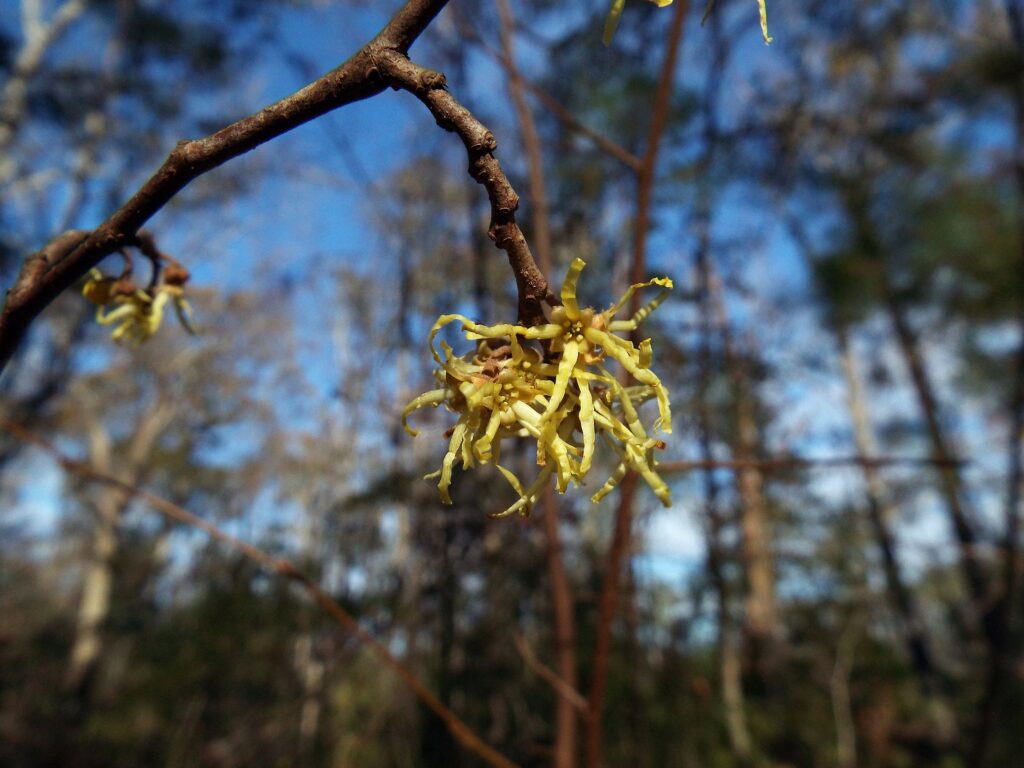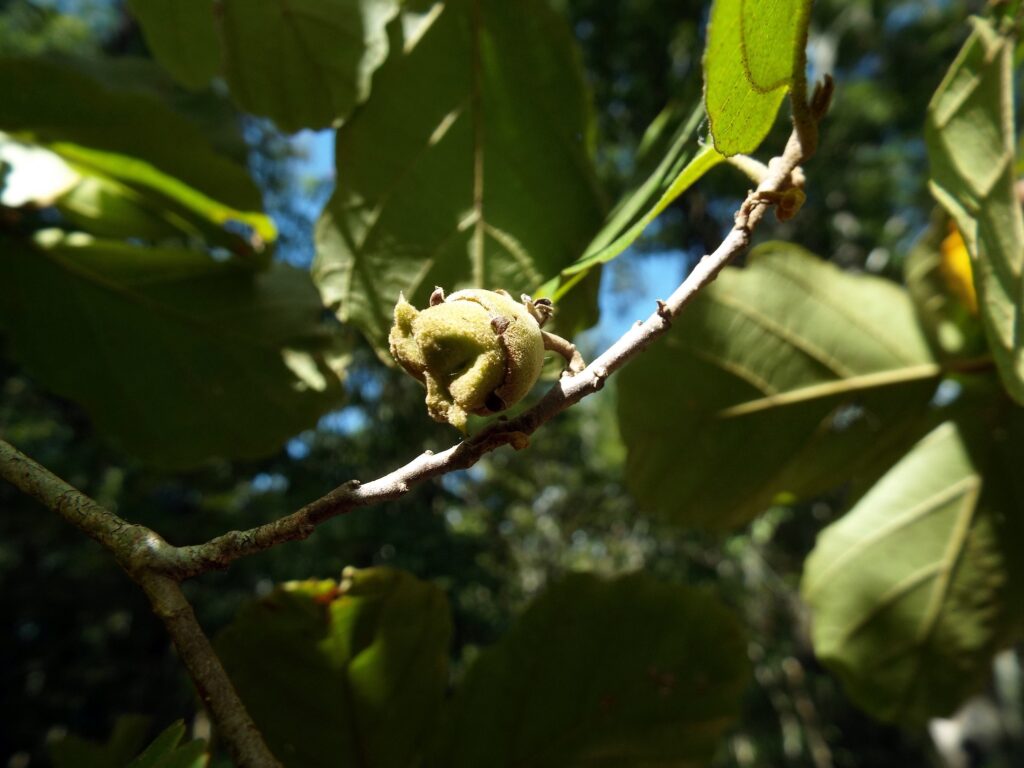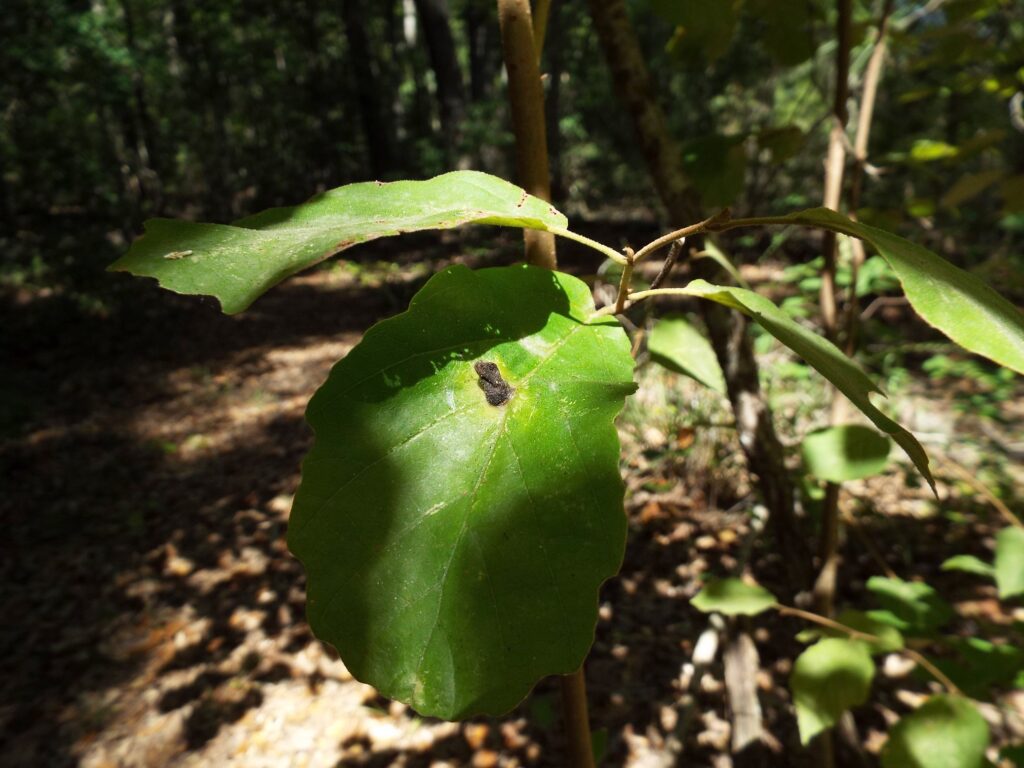



This week for Flora and Fauna Friday, we have an explosive and medicinal shrub that can be found flowering in the winter woods. This week we’re talking about American Witch-hazel (Hamamelis virginiana).
Witch-hazel is a large open shrub that grows in the understory of hardwood forests. It has fairly large, oval-shaped, deciduous leaves with a crenate (scalloped) margin. Its bark is thin with a light tan to gray color. Witch-hazel blooms in late Fall and here on the coast it’s one of the last plants to flower. The flower is fairly small with four pale-yellow and curly, ribbon-like petals. The fruit is a capsule with four bumps on top, like the scores in a loaf of bread, that cradle the two seeds within. Many of you likely know of Witch-hazel from its medicinal applications. Witch-hazel bark, stems, and leaves can be boiled to extract astringent compounds that can contract the skin and help relieve mild skin irritation. However, most modern concoctions are lacking in this traditional plant derived astringent.
Witch-hazel fruits remain on the shrub for a full year. Come autumn, they undergo an amazing process. The walls of the fruit grow asymmetrically at the cellular level. As it dries, this causes the wood of the fruit to bend outward. The water pressure from living cells is no longer there to retain the shape. These fruits are dehiscent too, meaning they have natural seams to allow the fruit to split as it dries. Neither of these two features are especially unique in the plant word and many species can do both. What is unique are the extremes to which Witch-hazel takes them both and the result it produces. The seams of this fruit are particularly strong and the asymmetry even stronger. As the fruit dries, the walls of the capsule put more and more pressure on the seams, creating a natural spring-loaded cannon. The spring pressure increases until a gust of wind, beam of sun, or some other disturbance causes a seam to fail and the whole fruit to split apart with an audible snap, kicking the seed out from the bottom in the process. This is called “explosive dehiscence” and it can throw the centimeter-long Witch-hazel seeds up to 30 feet!
It wouldn’t be Flora and Fauna Friday without me playing the explain the name game. So where does Witch-hazel get its interesting common name? It’s not that exciting. The plant looks similar to the true hazels, which produce hazelnuts, and “witch hazel” simply means “pliable hazel” in Middle English. However, a more interesting and completely false interpretation that I’m going to tell you anyway is that it comes from the galls that a certain species of aphid produces on its leaves. The Witch-hazel Cone Gall Aphid (Hormaphis hamamelidis) lays its eggs on the leaves of Witch-hazel. These eggs hatch into larvae that secrete chemicals into the tissue of the leaf. This tissue induces an abnormal growth on the leaf surrounding each larva. The larva feeds on the regenerating tissue inside of this growth while safe from the elements. This growth is called a gall and it’s a parasite’s way of fooling a plant into feeding its offspring. The galls of the Witch-hazel Cone Gall Aphid are conical in shape and poke out from the top of the leaf. This gives the leaf a shape similar to a witch’s hat, except with an over exaggerated brim width. That etymology isn’t true but I wanted an excuse to talk to about leaf galls.